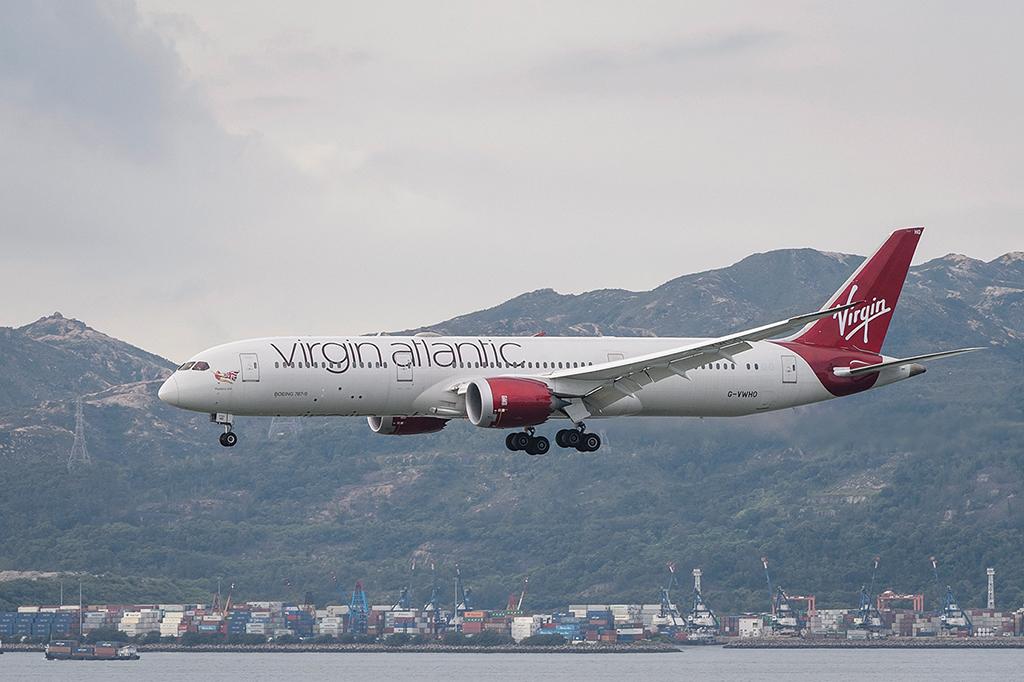
"How do you feel?” This question is likely to send most maintenance workers running for the hills. Opening up an aircraft engine is complicated, but opening up emotionally? That is a different story—which could be about to be rewritten.
The 2015 Germanwings pilot-suicide set the mental health wheels in motion long before the COVID-19 pandemic took hold. This led to the European Union Aviation Safety Agency’s new mental fitness rules, which took effect in February 2021. These apply only to pilots, but there have been calls for the regulation to be extended to other safety-critical personnel such as MRO workers.
“To me, it’s very disappointing that maintenance and cabin crew needs are often a second thought to pilots,” Centre for Aviation Psychology founder and business development director Aedrian Bekker tells Inside MRO. “To be fair to [the European Union Aviation Safety Agency (EASA)], they did say, ‘Let’s focus on the pilots first, then we’ll think about expanding it to the other professions.’ Will this take another five years? Hopefully, there won’t be another incident before something gets done.”
Under the new rules for pilots, European Union airlines must perform start-of-employment psychological assessments and substance-abuse testing and give all cockpit crew access to a mental health support program. But how well would mental well-being rules work in a maintenance environment?
“What’s well-being? It sounds a little bit as if we’ve all gone off to California and started hugging trees,” Marc Atherton, an aviation psychologist at Allaxa, told delegates at a UK Royal Aeronautical Society conference on mental well-being in MRO.
In the macho world of aircraft maintenance, there is little space for tree-hugging. However, Atherton said insurers now view human factors as the primary risk for aviation, pushing mental well-being onto corporate radar screens.
“Failing to deal with a known risk in the workplace, even if it’s psychosocial, can effectively lead that organization and its senior leadership straight to court, with almost no defense possible. So there’s a very good legal argument for organizations to now create a positive mental health and well-being environment for staff,” Atherton said.
EU Airline Actions
This means that several EU airlines have gone further than the EASA rules for pilots, extending support programs to other workers. Others, like Virgin Atlantic, have already made mental well-being part of their core maintenance training.

“We’ve had a very successful well-being program here at Virgin Atlantic for the past three years, and we’ve made that part of our mandatory training program for all of our Part 145 and Part M staff,” says Virgin Atlantic Part 145 Compliance Manager Charlie Brown. “Now, in the COVID world, we are delivering well-being presentations twice a month to our staff as part of their mandatory training.”
This initiative is backed by top management; Virgin Atlantic Vice President for Engineering and Maintenance Phil Wardlaw and Head of Aircraft Maintenance Karl Howard-Norris have both posted mental well-being videos to the airline’s staff app. “They’re little snippet videos; they just post about things that they find help them in these particularly stressful times,” Brown says.
One conference delegate suggested that airlines might ultimately want to check the mental health culture of third-party MRO suppliers, so the ripple effect of this trend could ultimately go beyond just airlines.
But the data- and process-driven MRO environment may not sit well with “vague and woolly” perceptions of well-being, said Atherton. “I would argue in the engineering community, it’s probably even more valuable to see that data can be measured, analyzed, interpreted and responded to in a coherent way,” he said.
Atherton asserts that mental health issues can actually be measured fairly well. This data can then be used to inform interventions such as additional training and resources. “It allows us to get ahead of the curve and to look to integrating data-driven responses into our safety-management systems,” he said. “Well-being and mental health need not necessarily be a woolly [confusing] area.”
Data-Driven or Woolly?
Evidence of this can be seen from the new rules for pilots. The EASA regulation supports the creation of peer-assistance networks (PAN) or peer-support programs (PSP), for which pilot-volunteers from within the airline are trained to listen to their colleagues’ problems under the supervision of a mental health professional. The idea is that talking to a co-worker with first-hand experience of the job is less intimidating than seeking formal medical help.
Kura Human Factors, which runs a multi-airline peer-support network, has collated anonymized data from peer-support volunteers to create a picture of typical reasons for seeking support. These include a range of normal “real life” problems such as alcohol (3%), stress (10%) and anxiety (13%), along with more pilot-specific issues such as post-incident reactions (4%). This data can then be used to offer more proactive help.
“Currently, pilots benefit from a peer-support program as a mandatory requirement. Engineers, sadly, do not,” Atherton said. “However, simply adopting a pilot peer-support program, unmodified, is unlikely to be totally successful. The reason is quite straightforward. The structure of a peer-support program changes based on the specific circumstances of the people it is meant to address as well as the organization into which it fits. Engineering has unique constraints, which are not the same as those for pilots in many ways.”
Specifically, MRO covers a very wide range of skills and disciplines, spanning multiple organizations, contract types, shift patterns and teaming arrangements. Bekker, a peer-support specialist at the Centre for Aviation Psychology, also observes that engineering has a particular culture that can make seeking help difficult.
“The demographic in aviation engineering roles is predominantly males of a particular age group, [for whom] putting your hand up and asking for help feels very foreign and very alien. Vulnerability and need, to this group, can equate to weakness. So, essentially, peer support is about normalizing the behavior of asking for help,” Bekker says.
Paul Dickens from Core Aviation Psychology also observed that the maintenance environment is often physically uncomfortable and emotionally tough. “Most engineers in MRO organizations are operating under time and management pressures—‘Get this fixed now; I need that aircraft back on line’—so there’s quite a bit of externally imposed pressure.”
Very little psychometric data is available on maintenance workers, and most of it is not broken down by discipline. However, from the limited data available, people who fix aircraft tend to be older workers who are practical and pragmatic, with a strong desire to get things done quickly and perfectly while ensuring rules are followed.
“They tend to be calmer, a bit more resilient than the population at large,” Dickens says. “The biggest statistical difference is on conscientiousness. They tend to be far more organized, detailed and methodical than the general population, by quite a bit. That actually also mirrors pilots, but engineers are even more extreme in conscientiousness.”
However, this stoicism can also be a limiting factor, creating a self-induced pressure to perform and complete tasks even at the expense of well-being. “At the extreme, we know it leads to a tendency for people to be extremely self-reliant. Because they are resilient, they think they can fix their problems for themselves, and then they don’t access support mechanisms,” Dickens adds.
If this culture is to change, it will first require a shift in top management thinking. “It’s a hefty physical environment, and sometimes the management skills go alongside that,” Dickens observes. “What is evidenced from many operators that I’ve worked with is people end up in engineering management not specifically because of their people skills, but because they have served their time and they are good, experienced engineers. So sometimes the management culture doesn’t help the working context.”
Peer Support
Dickens went on to revisit the question of whether the regulations for pilots—and peer support—should also apply to engineers. “Hopefully, that will be the case,” he said. “An aircraft engineer [who is] distracted by mental health and well-being issues is as big a risk to aircraft safety as a pilot experiencing the same things.”
All medical-certificate holders—including pilots, cabin crew and air traffic controllers—are already subject to mental fitness requirements, but this is different than the kind of support that has been mandated for pilots. At the moment, EASA has no immediate plans to extend this to MRO personnel. However, just because it is not scheduled in EASA’s workplan does not mean that the idea has been abandoned. “There has been some discussion with the EASA medical experts’ group about the possibility, or need, of having a certain degree of medical certification, including mental health, for other categories of personnel,” says EASA medical expert Cristian Ionut Panait.

“However, as these other categories are assessed under the national occupational health system—and are [therefore] not subject to the European aviation medical certification system—for the time being, the activity has not proceeded further,” he says. “If member states or the industry request this, or if we identify a need through our safety-monitoring systems, then we may include that in a future rulemaking task.”
The Business Case
Beyond adhering to regulations, promoting mental well-being actually makes good business sense. “There’s a lot of evidence out there now that can be drawn upon to show that investments in positive mental health and well-being programs show a positive return on investment,” Atherton said.
“For every £1, €1 or $1 that you invest in a mental health and well-being program, you actually see a 2.50-5.00 pound, dollar or euro return on the bottom line. The mechanisms for this are really built around reduced absenteeism, increased productivity and performance, reduced medical compensation claims and reduced ‘presenteeism’—people just sitting in the workplace and not really delivering on their performance targets properly.”
German pilot-support group Stiftung Mayday (Mayday Foundation) points to huge cost savings in terms of hiring and training from saving a skilled worker’s career. They estimate this at €50,000-1 million ($61,000-1.2 million) per pilot. Losing a maintenance worker to mental health issues can be costly, particularly in a scarce-skills environment.
One quote, by South African Archbishop Desmond Tutu, was revisited time and time again during the conference: “There comes a point where we need to stop just pulling people out of the river. We need to go upstream and find out why they’re falling in.” In a safety-critical environment that is increasingly shifting toward Safety-II accident prevention, the conversation needs to shift from “how are you doing?” to “how are you REALLY doing?”
“Clearly, if you’re dealing with a lot going on at home, your mind’s not going to be on the job,” Bekker says. “How do we move the conversation beyond suicide prevention and just recognize that looking after mental well-being is good for business—and good for safety.”





